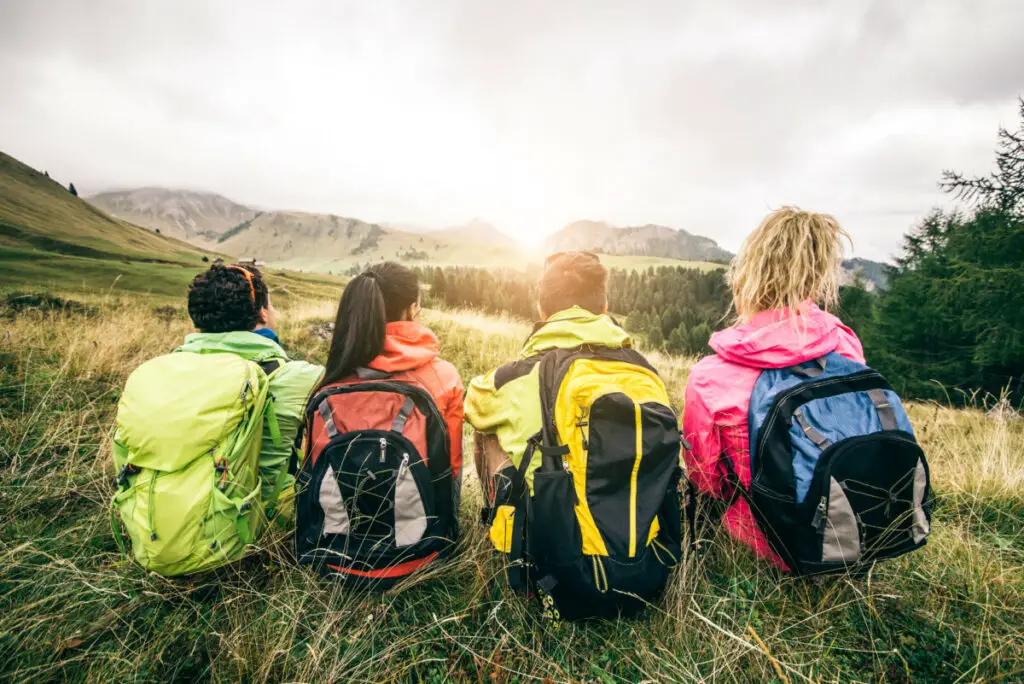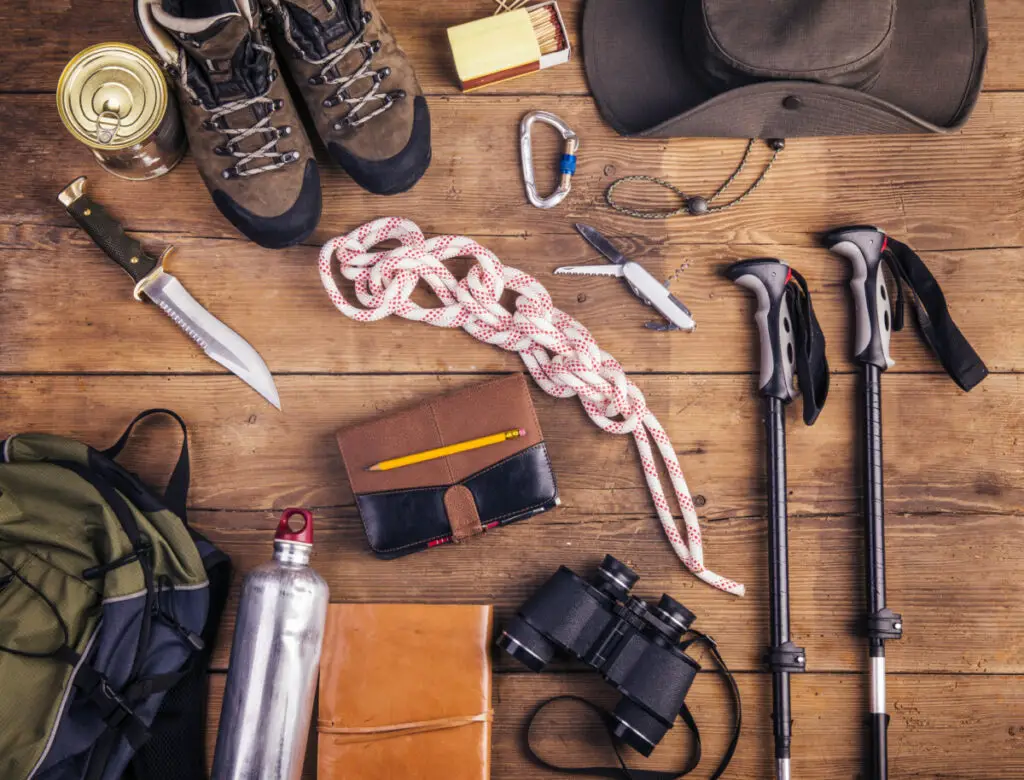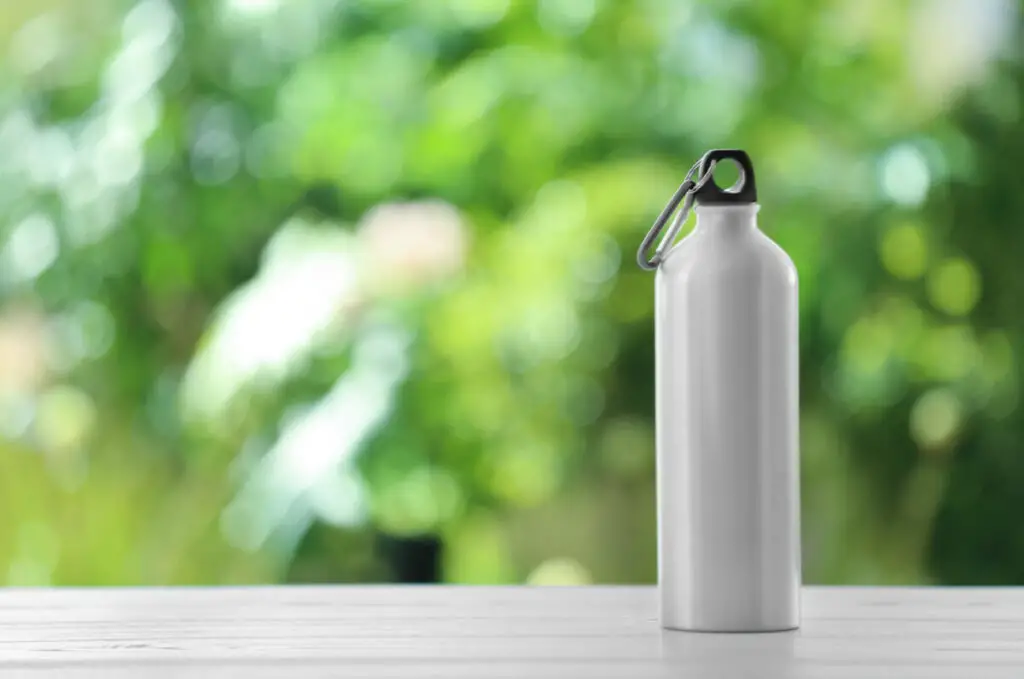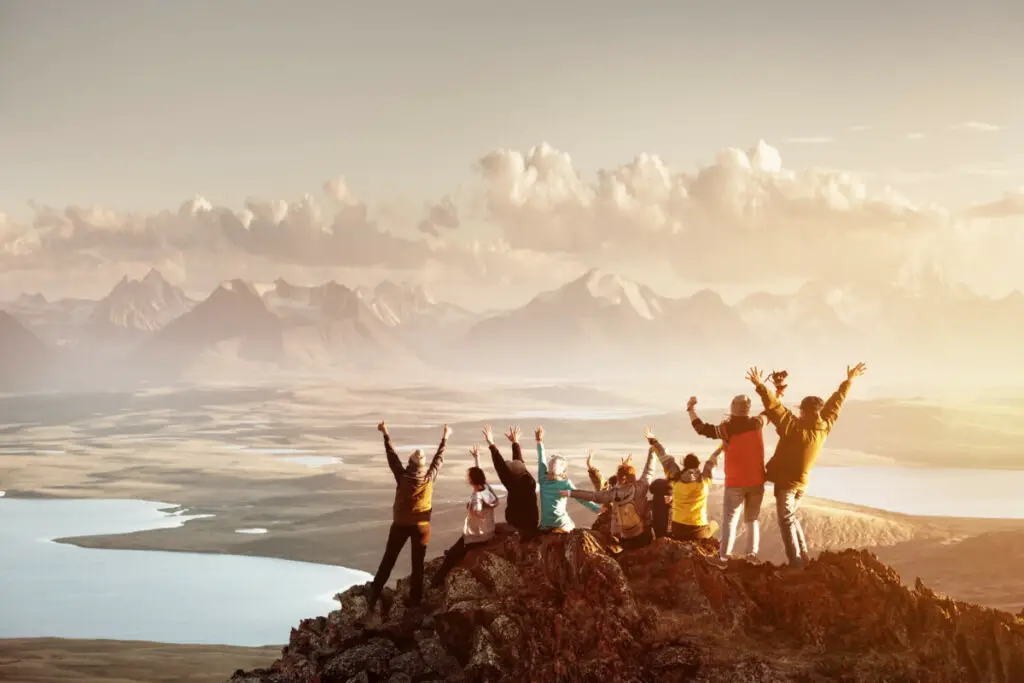
Of all the many activities to do outdoors, there is one that speaks to a wide variety of people. Hiking is generally lower effort than camping, but can still facilitate an adventure and with the right training, even bigger adventures to more remote places.
Group hiking is generally safer than solo hiking, but solo hiking draws people in with experiences such as being alone with nature. There are pros and cons to both and it is up to the hiker to weigh these carefully before they decide how they’ll go about hiking a trail and adventuring in nature.
The following guide will explain the different things a hiker needs to contemplate before they choose which hiking style better suits them and go through the pros and cons of each style.
Choosing a Trail – Group vs Solo
The first step of any hiking trip is to pick a place to go. Every place will have different hikes nearby, usually within an hour or two of a drive. There are a few things to consider and they only change minutely between hiking solo and hiking with a group. One of those things is the distance of the hike, seeing as a group hiking means having to account for a whole bunch of people’s hiking habits and limitations.
For solo hikers, they’ll have to make sure the trail is safe and responsibly mapped out so that if they end up running into trouble, they’ll not have any danger of losing their life or getting seriously injured. This step is extremely important for the safety and enjoyment of solo hiking and those who skip these steps don’t usually live to tell the tale.
A good recommendation for hiking with a group is choosing one under or capped at 5 miles with decent turn-off points. Alternatively, if the group feels like pushing on, a round trip hike of around 5 miles would work since it requires finishing rather than turning back around. If there aren’t any hikes in the area like this, remember to be okay with turning around if the group gets tired. It’s better to stay together.
Solo hikers generally move faster and farther than a group does. A beginning solo hiker should only do hikes as fast as those 5-mile group ones, but those with more experience would be safe to branch out to the 7-mile and longer hikes. There are some great hikes like this and the longer ones are more like backpacking trips.
Looking for a good trail to hike? A widely recommended website is AllTrails. It uses the area zip code or city to find close trails and rates them on their difficulty level. It also provides an estimated length of time and the miles the hike is.
Necessary Equipment

The necessary equipment for hiking varies with how long the trail is and what the elevation and trail itself is looking like, but there are some commonalities in all of the required equipment for a hike.
Bug spray is a must. It doesn’t matter where a hiker decides to go, there will be bugs unless it’s the middle of winter. Having bug spray and bug repellent will save a hiker from many uncomfortable moments of itchy bug bites. Along this line, other repellents for the animals and bugs that are native are helpful and recommended, such as bear repellent.
Kits to handle being bitten by extremely unfriendly native animals and bugs, like spider bite kits and snake bite kits are extremely useful to have. Hope to never have to use them. These are all worst-case scenario supplies, but none of them should ever be left in a vehicle before the start of a hike. It’s better to have them for the circumstance than to wish that they’d been brought along.
Each hiker should have their own backpack with a few different things inside. A first aid kit, snacks, their water bottle, sunscreen, and a whistle for if they get separated or lost. Bringing along a compass, a pocket knife, an emergency blanket, or a walkie-talkie is a smart idea. (Source)
When to Hike
Choosing when to hike is also something of a puzzle. Hiking in the heat of the day is extremely unhealthy because of the risk of dehydration, heatstroke, and sunburns. Hiking too early brings the risk of being caught in the rain or in areas that could have flash flood warnings or mudslides.
Check the best time to hike in the area by looking it up, and then usually after a canyon or trail has been opened up after snow melts or other seasonal changes, late spring through early summer is a good time. Hiking during the summer with the right precautions is fine, and hiking during the earlier fall will keep a hiker happier and having more fun while also getting to see the changes of color in the trees.
Cons of Hiking Alone
Dangerous
One of the biggest cons of hiking solo is the danger. Hiking alone can be a pleasant pastime, however, it can quickly become dangerous for a variety of different reasons. The chosen trail could become treacherous, bad weather could cause a hiker to get confused or lost, and any sort of accident that harms and injures a hiker could happen.
There are movies about solo hikers that have gone to extreme lengths just to survive being stranded in the wilderness without hope of help or rescue. For family members and friends of a solo hiker, this is the main worry that is constant in their minds. And a solo hiker needs to be prepared and ready for situations like this.
Lonely
It can get kind of lonely out there by yourself. Just hearing the sounds of nature surrounding you can make you feel paranoid. However, most people like this about solo hiking.
Mentally or Emotionally Draining
It can be kind of draining to plan trips for a solo hiker. Choosing a place, watching the weather, packing, preparing, and driving to the appointed place. All of this without being able to really share in the joy and excitement of a trip.
Cons of Hiking with a Group
Hiking with friends can be such a pleasure and a wonderful social experience, but there are several things that can make this less of an enjoyable experience and more of a nightmare. (Source)
Size of a Group
The size of a group can and will affect just how much fun a hiker can have when they go with a group. Hiking with a large group comes with all sorts of logistic nightmares. Each person in the group will have a different ability and attention span for the nature around them.
Some people might have different tolerances for heat, weather, and bugs. Depending on what kind of trail the group is hiking, this kind of group can turn into a disaster that no one will remember with any fondness. Some people have solutions for this, but the recommendation is to not go overboard with how many people hike in a group to keep things fun for everyone.
The recommended number of people in a hiking group is 8-10. Having someone as the appointed leader will help keep track of everyone as most leaders, regardless of their personal pace, should be at the back of the group.
Age of the Group
The age range of the group will also have an impact on how well the hike goes. Having a group of similar-aged people will make it easier for limitations to be followed and respected, whereas hiking with a family from toddlers to teenagers is an entirely different experience.
Pace
Everything about a group means that the pace will be constantly changing and it’ll be difficult to either be constantly trying to catch up with a group or being too far ahead and even being stuck with the group at times can be frustrating. Everyone will have a different pace and different levels of enjoyment. For a more independent soul, this is the worst way to appreciate nature and the secluded habitats that trails are made through.
Change of Plans
Finally, coordinating with a group is such a hassle. Sometimes a time or date might not work for one singular person, carpooling is a pain to figure out, who’s bringing an after-hike snack if at all, and where to hike. These constant changes of plans can be frustrating and detract from an enjoyable time.
How Much Water to Bring – Solo vs Group

Bringing water can be difficult as most of the weight in a hiking backpack will come from the weight of the water and how much is brought. Typically, an individual should be drinking between 32 ounces and 64 ounces of water every single day. For a hiking trip, it’s always better to have too much rather than too little as some people will be able to consume more than others.
It is recommended for an individual to drink about 16 ounces in one hour of hiking. This is just a little bit less than most plastic water bottles are and if it’s a short hike, that will be good for the hike. If it’s longer, then bring that much water for each hour expected to be hiking and on the trail. (Source)
Pros of Hiking Alone
Hiking Solo can be such a joyous experience and can really let someone appreciate nature and life at their own pace and for themselves. The happiness an individual gets when being surrounded by nature is phenomenal and is something of a rarity for others, held back by the fears surrounding being a solo hiker. (Source)
Confidence
Hiking solo requires a lot of confidence and preparation. Learning to be a solo hiker can also facilitate having this kind of confidence that can be applied in other parts of life, not just when a hiker is on the trails and surrounded by nothing but nature and the sky.
Keeping an itinerary and safety precautions such as communicating where a hiker will be at and when will keep the hiker safe and confident in their abilities and enjoyment of the outdoor activity.
Set the Pace
When a hiker is alone, they get to set the pace. No one else is telling them how fast to go, where to be in a group and they can be fast or as slow as they wish to be. They will be able to follow their own limitations and abilities much easier than being held back or pushed constantly by a group.
Enjoy the moment
The best part of being a solo hiker is that the hiker gets to take seconds to stop whenever they wish. Stop and stare at a flower for a while, sit against a tree and watch the ants, contemplate life, and feel the wind going past and through the trees. So much in the modern era is constantly angled around a constant, nonstop go mentality. Hikers can find solace in the moments that they don’t have to listen to the push and pull of that mentality and simply be.
Pros of Hiking in a Group

Social Interaction
When hiking with a group, one of the best positives of it is that it is incredibly enjoyable to spend quality time with friends or family and appreciate the beauty of nature together while also being healthy and exercising. These memories can be some of the best-treasured things for years to come and the camaraderie of the moment is something not a lot of people experience.
Safer
It’s much safer than hiking alone. If someone is injured, there is always someone nearby to help and aid in first aid or comfort. There are people who know their way around trails better and have better directional senses than others do.
Easier to Carry Things
It’s incredibly easy to carry things when you hike in a group because although more gear will be needed, more people are there to carry it. This means that everyone won’t have to carry a lot of gear and you can easily bring extra items that aren’t necessarily essential. (Source)
Overall, it is up to you whether you go on a solo or group hike.

